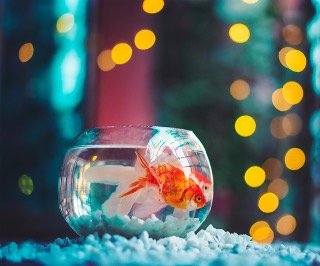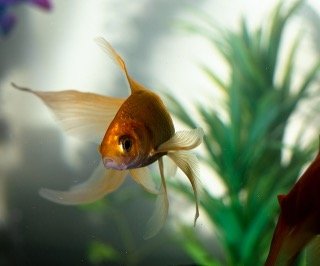
Introduction
Tangs are a type of marine fish also known as surgeonfish. They like aquariums with warmer water, and the majority of their diet consists of plant stuff. They are available in a range of vivid hues that make your aquarium look more attractive. Although they are not particularly beginner-friendly, intermediate aquarium keepers and those who have successfully maintained tropical tanks ought to be able to take good care of them without making too many mistakes.
With the exception of the blue powder tang, which can be aggressive toward other surgeonfish, tangs typically form schools. A group of the smaller tang species can be housed in a 300 gallon or 1,136 liter tank, although they do best in extremely big, heated tanks.
You may also like to read Why Don’t Goldfish Live Longer?
10 Common Tang & Surgeon Fish Types
- Powder Blue Tang
The astonishingly gorgeous color of powder blue tangs is a bright blend of blue and yellow hues. They can be very aggressive with other tangs in the aquarium and are quite territorial, making them fairly challenging to keep healthy and successful. Due to their extremely tiny body structure, powder blue tangs may squeeze into small areas and eat algae that is growing on surfaces. They can reach a maximum length of 9 inches and have a lifespan of 30 to 45 years.
2. Yellow Tang
Yellow tangs have stunning, vivid coloring. They are among the more robust and little tangs that can be kept as aquarium pets. Male yellow tangs can grow up to 8 inches in length, which is longer than females. They have a lifespan of roughly 30 years. When purchased in bulk from the same retailer or if they are supplied from the same online vendor, this type of item can be kept in groups. They have an oval-shaped body with long, rounded fins on the top and bottom. The beautiful yellow color does start to dwindle a little at night, but as soon as they are in the light, it returns.
3. Clown Tang
The bodies of clown tangs exhibit a distinctive design. They are highly active in their tanks and can grow to be over a foot long, however they can be aggressive toward other fish species and even other tangs in the aquarium. They reach a maximum length of 12 to 14 inches. Their average life expectancy is 25 to 30 years. Their tail is very stunning, and the top of their body has lovely, detailed, orange and blue designs with an orange and white pattern on the head.
4. Yellow Eye Kole Tang
Kole tangs have a stunning color pattern of dark blue and dark pink that meld into one another like an ombre effect. They are also recognized to be excellent algae grazers. Their bodies are covered in tiny white spots. They are one of the less aggressive tang species and are susceptible to harassment from their tank mates. They typically reach a length of 7 inches and have a lifespan of about 10 years.
5. Acilles Tang
The normal size of an Achilles tang is 9 inches, and it has a semi-aggressive personality. They have a purple and black colour with patterns in bright blue and orange. The tail’s tips have a white tint and are practically translucent. These tang fish are among the more sophisticated and delicate varieties available, making them unsuitable for novice or even intermediate hobbyists. Even seasoned hobbyists find it difficult to please them. They require a commitment over a long period of time because of their 30- to 45-year lifespan.
6. Purple Tang Fish
As their name implies, purple tangs have a purplish-blue colour on their bodies, and their pectoral fins and tail have a brilliant yellow coloring, making them stand out in an aquarium. Purple tangs have an average lifespan of 12 years. It is not advisable to maintain them with other aggressive tankmates or other varieties of tangs because they typically reach a length of around 9 inches and have a strong territorial personality, especially as they develop.
Conclusion
You may find it difficult to choose the surgeonfish, commonly known as tang, that is best for you because there are so many stunning varieties. In order to fit the tang you select, it is best to make sure your tank is the appropriate size, configuration, and diet. You should also be aware that most tangs can potentially require a 40-year commitment. Your tang will thrive and live a long life in your care if you take proper care of them.




